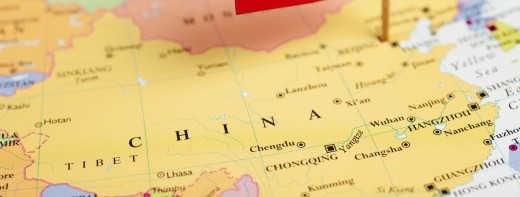
Thomas Clayton has started and run numerous high-tech startups in Silicon Valley. He is currently CEO of Bubbly, a social media startup backed by Sequoia Capital, SingTel Innov8, and JAFCO. The company is one of the largest VC–backed startups in Southeast Asia, having raised over $60 million in funding.
This is the first of a four-part series that will provide insight into starting, building, and funding a company across Asia.
Asia has proven to be an instrumental market for businesses to break into, and as the CEO of a successful Singapore-based startup, I get asked a lot of questions from fellow CEOs and entrepreneurs about doing business here and how to grow their companies across Asia.
Expanding into Asia can be a very complicated process with many subtle but important factors that often go unnoticed to first-time entrepreneurs. Asia is a widely diverse continent with 52 primary languages, 27 different currencies, the highest and lowest GDP per capita, numerous cultures, religions, legal systems, trade barriers, political systems, graft, and many more nuances that are important to consider
The most common question I get asked by far is: “Where do I start?” Here are some tips to help entrepreneurs and companies navigate this new terrain and jump-start their businesses on this wonderful continent.
Prioritize the markets
It’s wise to first broadly prioritize the top markets (i.e. countries or cities) across Asia that you would like to target. An easy way to start thinking about this is to use a formula that I have found extremely useful.
First, brainstorm the top ten levers that will drive revenue, users, and/or usage for your business. For revenue, broad drivers are often things like GDP per capita, SMS price points, voice minute pricing, or CPM or CPC in an advertising revenue model. For users, it could be things like population size, Internet penetration, or number of smartphone users. As for usage, possible drivers include percentage of smartphone population, social activity on popular services like Twitter and Facebook, or messaging volumes.
Then plug the data for all of your potential target markets in Asia into the table. It can be difficult to put a number on qualitative factors, but push yourself to determine a value for the drivers as best you can based on each market’s specific characteristics. And then come up with a weighted average for each of these drivers to sum a total score for each market.
This will force a ranking of the markets. It is certainly not a science, but it directionally provides an idea of how to weight the various opportunities, which is a key first step. If done right, the output usually proves to be quite insightful. I’ve often found that when the CEOs of boards that I sit on here go through this exercise, they realize that one market they were focused on is actually one-tenth the size of another market they were not paying attention to.
In Asia, the sizes of markets are often magnitudes in difference. This will make those differences and thus, the priorities, very clear.
Laser focus
Rome wasn’t built in a day. To start, companies can’t go after everything at once. And companies are always going to be much more effective here diving deep into one market versus putting your toes in the water across many markets. It’s better to select one to four of the markets (at most) from the top of the ranked list and target those initially. Grouping a related set of markets often helps in the execution as well, such as all Chinese or Bahasa speaking markets or several Southeast Asian markets.
Having a honed focus on a smaller selected area allows you to really dive deep and understand the intricacies of what it takes to make your business successful in a given market and gives you the time and resources to go after those factors. In Asia, if you’re spread too thin across too many markets, nothing ever gets done. These are all high-touch, relationship-based markets and you need to be on the ground, in market, day in and day out.
Once a market or set of markets is nailed down, plant a flag and grow from there. Do not waver.
Be aware of the largest markets
It’s key to keep in mind that large insular markets will suck companies in, particularly India, China, and Japan. These markets, although they are great and very alluring, can be a difficult place to start.
First, they are harder to stand out in with limited resources. In a smaller market, companies gain easier access to users, the ability to make a larger splash due to fewer conflicting messages, and faster growth in that market. It’s harder to have the same type of infiltration in a large market on an equivalent budget due to increased noise and competition.
Another thing to keep in mind is that it’s very difficult to go after one of these markets and the rest of Asia in parallel. So if a company chooses to target a large market initially, I would recommend focusing all energy and resources on that one before growth allows the business to expand into the smaller markets in Asia.
But think carefully about this route and be prepared. I’ve seen many companies decide to go after one of these massive markets and just get completely sucked in. This is why it is very rare for the successful startups in China to be a big hit outside of China. The same goes for many Indian startups. They become so entrenched in their local markets, that it is difficult to grow outside of them. Many times, companies learn this lesson and these large markets aren’t even a priority for them.
It is also nearly impossible to find someone with deep relationships and expertise across those three massive markets, which can stunt a company’s growth tremendously. For example, it’s next to impossible to find a Japanese guy that can manage China and Japan – or vice-versa.
Hire REALLY good people
Entrepreneurs often make the mistake of settling for low-caliber employees when building out their core regional team in Asia, because they need to assemble one quickly. This is a huge mistake. These are going to be the people building and shaping the company’s brand, and particularly when first getting a company off of the ground in a new area, people that will go above and beyond in terms of time and effort are vital.
You need to find the rare mix of a scrappy, do everything, entrepreneurial type of person that is also on-the-ground and very well connected. These types of people are rare breeds across Asia. Typically, folks are either very local and not so scrappy or are very Western and entrepreneurial, but not very entrenched in the local markets.
It is of course extremely difficult to gauge just how connected candidates are when you’re going after a new market where you have no basis to judge their local relationships, but go with your gut and check blind references – this is when tools like LinkedIn become extremely useful.
Overall, expanding operations to Asia can be a very difficult road to navigate. There are definitely some hidden speed bumps and roadblocks here and there, but ultimately it can be the most rewarding decision your business ever makes. After all, these are some of the largest and fastest growing markets in the world – and will be for the foreseeable future.
Images via Thinkstock, Thinkstock, Thinkstock, Shutterstock
Get the TNW newsletter
Get the most important tech news in your inbox each week.







